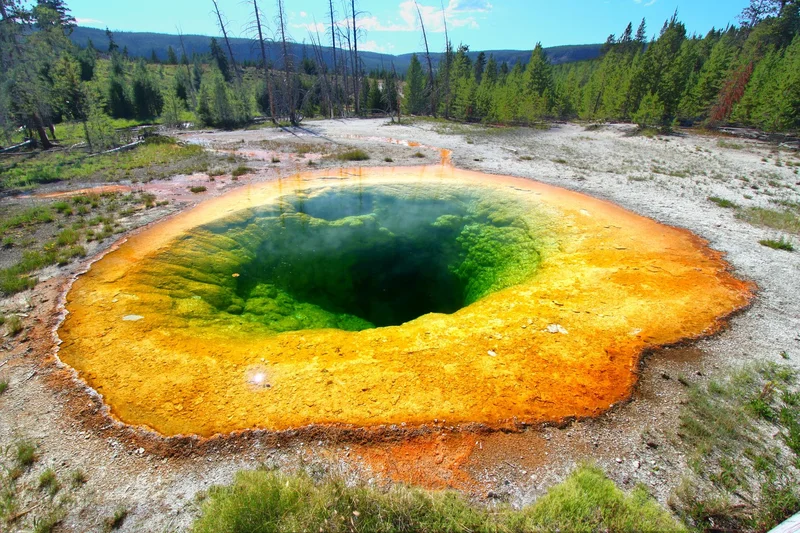Caldera: What We Know
Campi Flegrei: Decoding Earth's Whispers Before They Roar
Okay, everyone, buckle up. We're diving deep into some fascinating, and frankly, a little unnerving science coming out of Italy. Specifically, the Campi Flegrei caldera, a volcanic area near Naples. Now, I know what you might be thinking: volcanoes? Earthquakes? That sounds like a disaster movie, not a tech blog. But trust me, the research happening there right now is pushing the boundaries of what we understand about our planet—and how we might predict its behavior.
Scientists have been studying the seismic activity at Campi Flegrei, focusing on the relationship between earthquake rupture velocity (how fast the crack spreads) and stress drop (how much the pressure changes). It's complex stuff, but the core idea is that by understanding these parameters, we can get a better handle on what's happening beneath the surface, what's driving these earthquakes, and potentially, what might happen next. They are using advanced techniques to analyze seismic waves, teasing out subtle clues about the fault lines and magma chambers lurking below.
The implications are huge. Imagine being able to accurately forecast volcanic eruptions or major earthquakes. Think of the lives that could be saved, the infrastructure that could be protected! This isn't just about theoretical science; this is about real-world impact, about giving communities the time they need to prepare for the inevitable. It's like having a sophisticated early warning system for the planet itself.
Now, let’s be clear: we're not there yet. The research is ongoing, and the Earth is a notoriously complex system. There are countless variables at play, and predicting seismic events with 100% accuracy may always be a pipe dream. But the progress being made at Campi Flegrei is undeniable. The study highlights how changes in stress conditions on pre-existing faults around the caldera, driven by reservoir depressurization, heavily influence the triggering of earthquakes. This level of detail, just a few years ago, was simply unattainable. What does this mean? It means we're getting closer to understanding the Earth's inner workings, peeling back the layers of mystery that have shrouded our planet for centuries.

But here's where things get really interesting, the part that makes my heart race with excitement. The scientists are using a technique called the "LPDT-method" to jointly estimate rupture velocity, radius, and static stress drop. In simpler terms, this is a way of listening very, very carefully to the Earth's whispers – analyzing the tiniest vibrations to infer what's happening deep inside. And the fact that they are applying it to both P- and S-waves? Genius! A recent study published in Nature Communications details the interaction between earthquake rupture velocity and stress drop within the Campi Flegrei volcanic caldera Earthquake rupture velocity and stress drop interaction in the Campi Flegrei volcanic caldera.
This reminds me of the early days of weather forecasting. Back then, people relied on folklore and intuition. Now, we have sophisticated models that can predict hurricanes days in advance. What if we could do the same for earthquakes and volcanic eruptions? What if we could turn these destructive forces of nature into predictable, manageable events? When I first considered this, I had to pause and collect my thoughts; the implications are simply staggering.
Of course, with great power comes great responsibility. Imagine the ethical dilemmas that could arise from accurate earthquake prediction. Who gets the information first? How do you manage public panic? How do you balance the economic costs of evacuation with the potential for disaster? These are tough questions, but they are questions worth asking. Because the alternative – remaining in the dark, at the mercy of unpredictable natural forces – is simply not an option.
The research at Campi Flegrei is a testament to human ingenuity, our relentless curiosity, and our unwavering belief that we can understand the world around us. It's a reminder that even in the face of seemingly insurmountable challenges, progress is possible. And who knows? Maybe, just maybe, the secrets unlocked in this Italian caldera will one day help us protect communities around the world from the devastating effects of earthquakes and volcanic eruptions.
Earth's Secrets Are Within Reach
Tags: Caldera
Accenture: What It Is, Stock Performance, and Reddit's Take
Next PostNvidia Stock Price: What's Driving It and Where's the Ceiling?
Related Articles
